Sharks’ teeth are razor-sharp, like a steel knife. They can cut their prey into pieces with ease. The reason for such sharpness is hidden in its teeth’ anatomy. Sharks also often replace their teeth, making them sharp and ready to take down prey.
However, you must know so many interesting facts about shark teeth. And in this article, I will give a closer view of sharks’ teeth.
Detailed Anatomy of Shark Teeth
The teeth of sharks are made up of calcium phosphate, a mineral also called ‘dentin,’ which is harder than bones. It is covered by an even harder layer of enamel and looks very similar to human teeth. Sharks have rows and rows of replacement teeth, which continue to form in their mouth as the existing ones are used.
The shape of a shark’s tooth determines what kind of prey it can take down. For example, long, thin needles-like teeth are the perfect choice for small fishes, while broad, flat, wedge-shaped teeth better suit larger mammals.
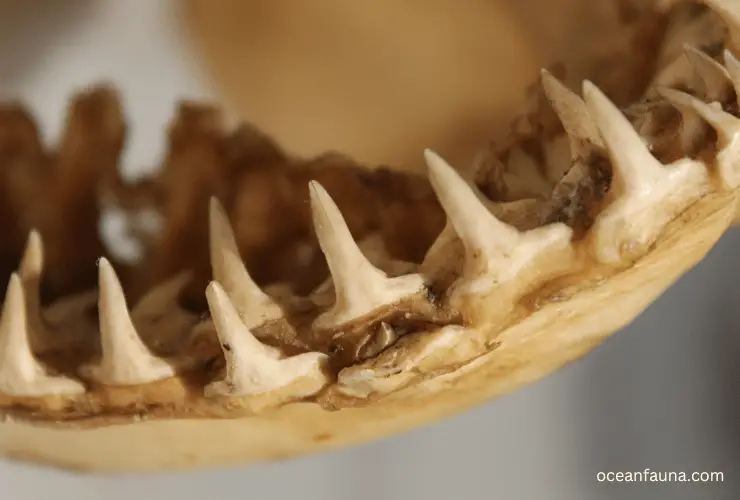
Shark teeth also come in different sizes, depending on the type of shark. For instance, the biggest Shark species have the largest teeth – up to 7 cm (2.7 inches) long. On the other hand, the smallest sharks have only very small teeth.
The shark’s teeth are so sharp because they are regularly replaced and have a serrated edge to them, which helps them cut flesh easily.
Furthermore, these fish continuously make new teeth as soon as an old one is lost or damaged. This way, the sharks always have sharp teeth, ready to take down their prey.
What Is Special About Sharks’ Teeth?
Sharks possess an impressive set of teeth that are specially adapted to their diet and lifestyle. They have up to 15 rows of sharp, serrated teeth stacked in their jaw which help them perform a variety of tasks, including biting, tearing, and ripping apart prey.
Thanks to their curved shape, pointed edges, and strong material composition, shark teeth are incredibly durable and can be used to puncture even the toughest hides.
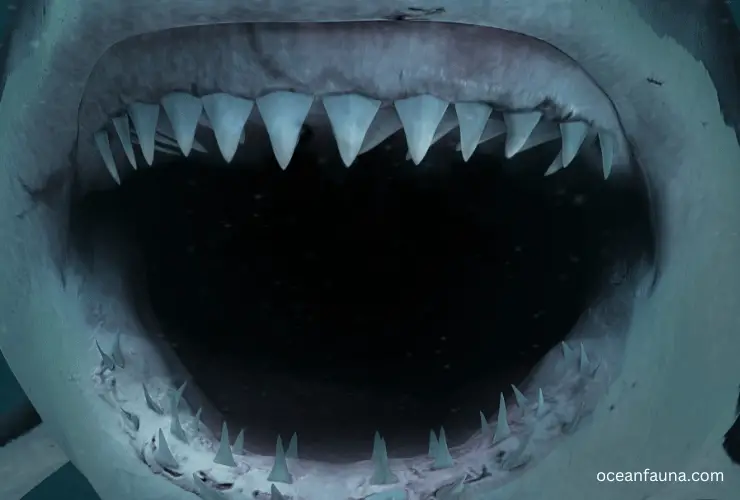
Furthermore, sharks can uniquely replace their teeth throughout their lifetime by growing new ones in rows within their jaw. This allows them to maintain a sharp set of teeth that are ready for feeding at all times.
In addition to their physical traits, shark teeth are also remarkable due to the symbolism they carry. Sharks have been revered and feared by many cultures throughout history, and their powerful jaws and sharp teeth have often represented strength and ferocity.
As such, shark teeth can be seen as a symbol of power, fearlessness, and resilience—traits that all humans should strive to embody.
How Many Rows of Teeth Do Sharks Have?
Sharks’ teeth row ranges from 5-15. Most sharks have five rows of teeth. However, some have seven, and others have around fifteen rows.
The top row of teeth is often the sharpest and longest, as these are used for capturing prey. The bottom rows are typically smaller and less sharp, as they are mainly meant for crushing food.
Also, the number of replacement teeth varies from one species to another. Some sharks can have up to 30,000 replacement teeth in their lifetime, while others may only get a few hundred.
How Many Teeth Do Sharks Have?
The number of teeth that sharks have depends on the species of shark. Some large species, such as whale sharks, can have up to 3000 teeth in their mouths at any given time.
Also Read: Do Sharks Chew Their Food? [Interesting!]
Smaller species, like the White Tip Reef Shark, typically only have around 175 teeth each. Great white sharks are a bit different, having 300 teeth in 5 rows, and each tooth can be as long as 7 cm (2.7 inches).
On top of this, great white sharks replace their top and bottom teeth at the same time every two weeks. This means that they can develop up to 30,000 replacement teeth throughout their lifespans. As you can see, there is a considerable range when it comes to the number of shark teeth depending on the type of shark and its size.
Are Shark Teeth Made of Bone?
No, shark teeth are not made of bone. Sharks do not have any bones in their bodies at all, so it stands to reason that their teeth are also not made of bone. Instead, shark teeth are composed of a mineral called ‘dentin.’ Dentin is harder and more durable than bone and is what human teeth are also made from.
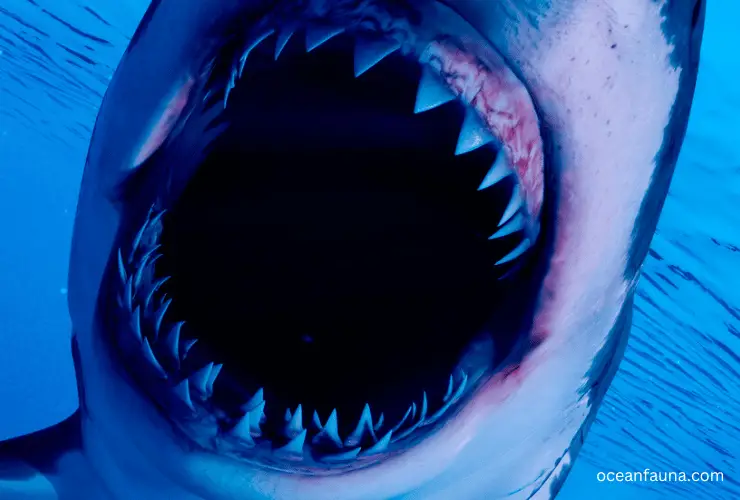
On the outer layer of the dentin, there is a layer of enamel that is even tougher and sharper than the dentin itself. The enamel of sharks’ teeth is composed primarily of fluoridated phosphate, making it even stronger and more resilient than dentin alone would be.
Because sharks don’t possess any bones in their bodies, it follows logically that their teeth cannot be made from bone either. Instead, they are constructed from dentin covered with a layer of enamel.
Are Shark Teeth as Strong as Humans’?
Yes, shark teeth are as strong as human teeth. Sharks and humans have dentin in their teeth, a type of mineralized connective tissue made up of small hydroxyapatite crystals. This makes both sets of teeth equally strong and durable.
However, the outer layer of the tooth is where the difference lies. Sharks’ tooth-coating material is composed of fluorapatite phosphate, which is harder than the hydroxyapatite found in human teeth. This allows sharks to maintain sharper and pointed teeth more efficiently than humans do.
Do All Sharks Have the Same Sharp Teeth?
No. Although all sharks have strong teeth, all of them don’t have the same sharp teeth since the size and shape of each set of teeth are specific to the species. Each shark has distinct dental characteristics that relate to its diet and lifestyle.
For example, great white sharks have strong, pointed triangular teeth that can take large chunks out of prey, while whale sharks have flat molar-like teeth used to filter out plankton.
Hammerhead sharks have wide, curved cusps that help them catch and hold onto struggling prey, while thresher sharks have slender blades with hooked tips, which they use to cut slippery fish in half.
What Shark Has the Sharpest Teeth?
Tiger sharks and silky sharks have the sharpest teeth of all sharks. Here are the details-
Tiger Sharks
The tiger shark has the sharpest teeth, with a serrated edge that helps them tear through tough-bodied prey. The tips of their teeth are so sharp they can easily penetrate even the thickest hides of animals like sea turtles and dolphins.
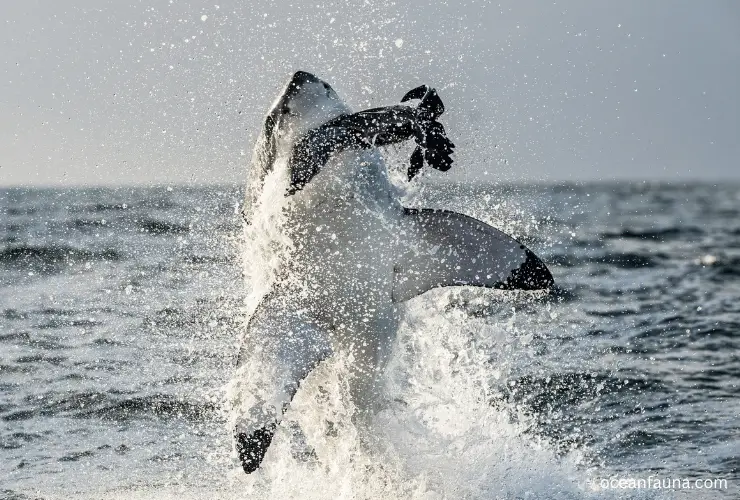
Their top row of teeth is triangular, with multiple points on each side, while the bottom row features smaller, smoother points. This combination allows them to latch onto their prey and rip it apart easily.
Additionally, tiger sharks have more teeth than most other species of sharks. This allows them to have replacement teeth ready if one is lost during a hunt or becomes damaged.
Silky Sharks
Much like the tiger shark, the silky shark also has razor-sharp teeth that can easily puncture even the toughest hides. Its top row of teeth features multiple pointed edges, and its bottom row sports smooth, curved, serrated points.
These serrations give their lower set of teeth an extra cutting power that makes it easier for them to bite into their prey and tear off large chunks at a time.
Furthermore, silky sharks have an impressive number of replacement teeth in reserve. This ensures that despite any losses or damages from feeding, they still have plenty left over for future use.
Why Do Shark Teeth Fall Out?
Sharks are constantly shedding and replacing their teeth because the teeth are not attached to roots alike human teeth. Sharks have multiple rows of teeth in their jaw, and when one tooth falls out, another moves forward to take its place. This process is known as “replacement dentition” and helps sharks keep up with their high metabolism.
The constant wearing of the shark’s teeth by eating prey every day causes them to weaken and eventually fall out, but this does not affect the shark’s ability to eat. Their inner row of teeth makes sure that it can still feed efficiently despite having their outer row wear down over time.
Additionally, sharks can also lose their teeth due to physical damage from injuries or fighting with other predators. When these injuries cause permanent damage or loss of its tooth, the shark will replace it with a new one from its inner rows.
In some cases, a deformed tooth may even be replaced before falling out because the shark can sense that it is unhealthy and likely won’t last long.
Do A Shark’s Teeth Grow Back?
Yes, a shark’s teeth grow back throughout its lifetime. This is due to their skeletal structure; sharks are cartilaginous fish, meaning that their skeleton is composed of flexible cartilage rather than hard bone.
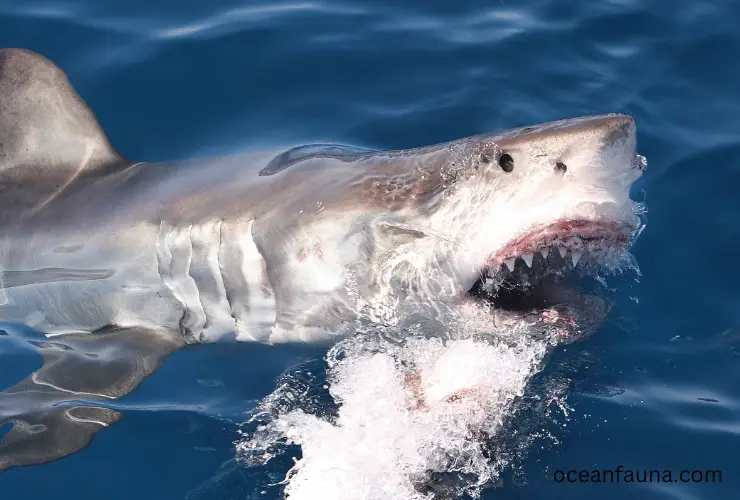
Cartilage has the property of being able to heal and regenerate, so when a shark loses a tooth, it can simply grow another in its place. Numerous rows of growing teeth within the shark’s jaw take over when one falls out or gets worn away.
In some species, like tiger sharks and nurse sharks, these rows can number in the dozens.
The rate at which new teeth grow depends on the species and age of the individual shark. Younger sharks will produce more new teeth than older ones as they have a higher metabolic rate and faster tissue regeneration capabilities.
Conclusion
So, now you have a compact and details knowledge of sharks’ teeth. Most of the shark species have razor-sharp teeth, which can easily puncture through the thick hides of their prey.
Also, because their teeth are not rooted like human teeth, many sharks constantly replace their worn-out teeth with new ones from inside rows.
This process ensures that the shark can keep up with its high metabolism and still hunt for prey efficiently despite any tooth damage or loss.

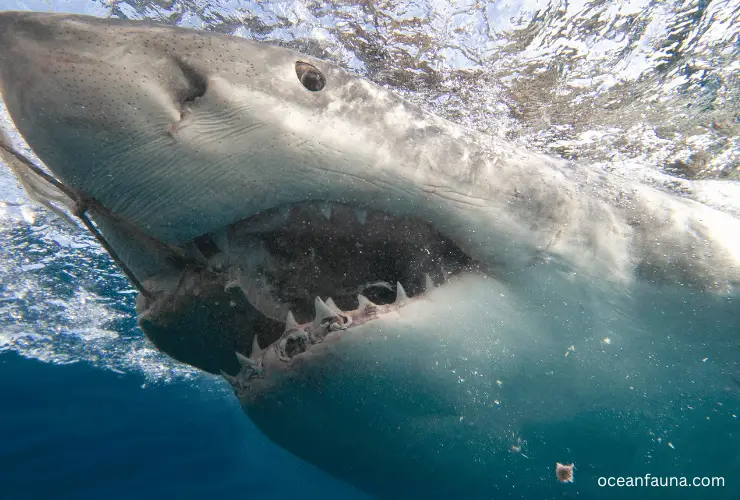
15 thoughts on “How Sharp Sharks’ Teeth Are? All About Shark Teeth”